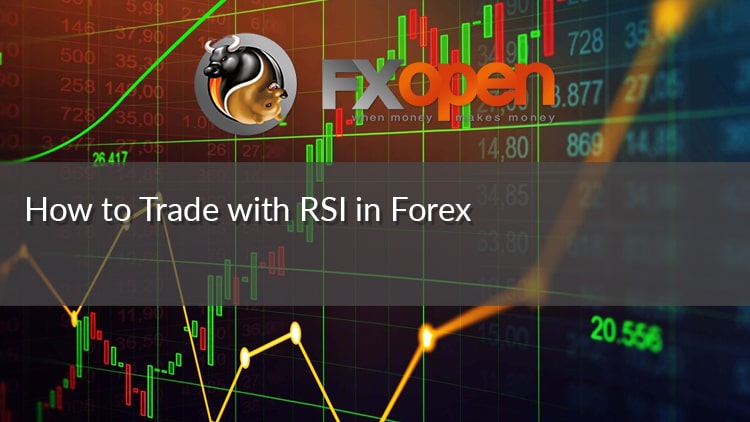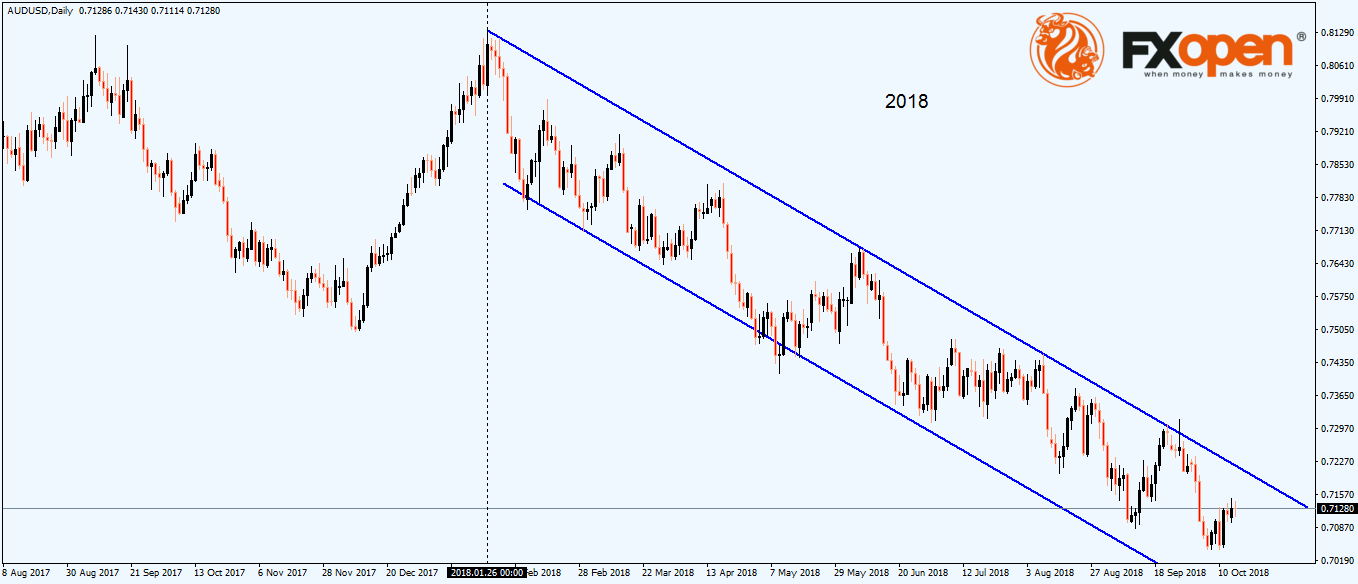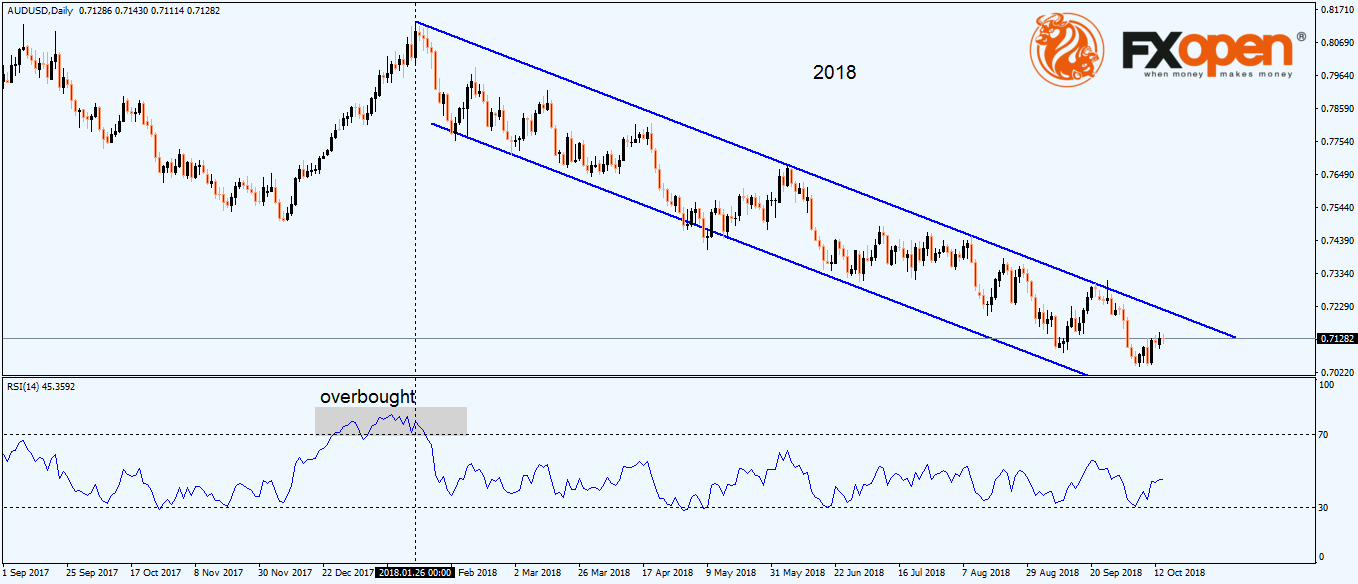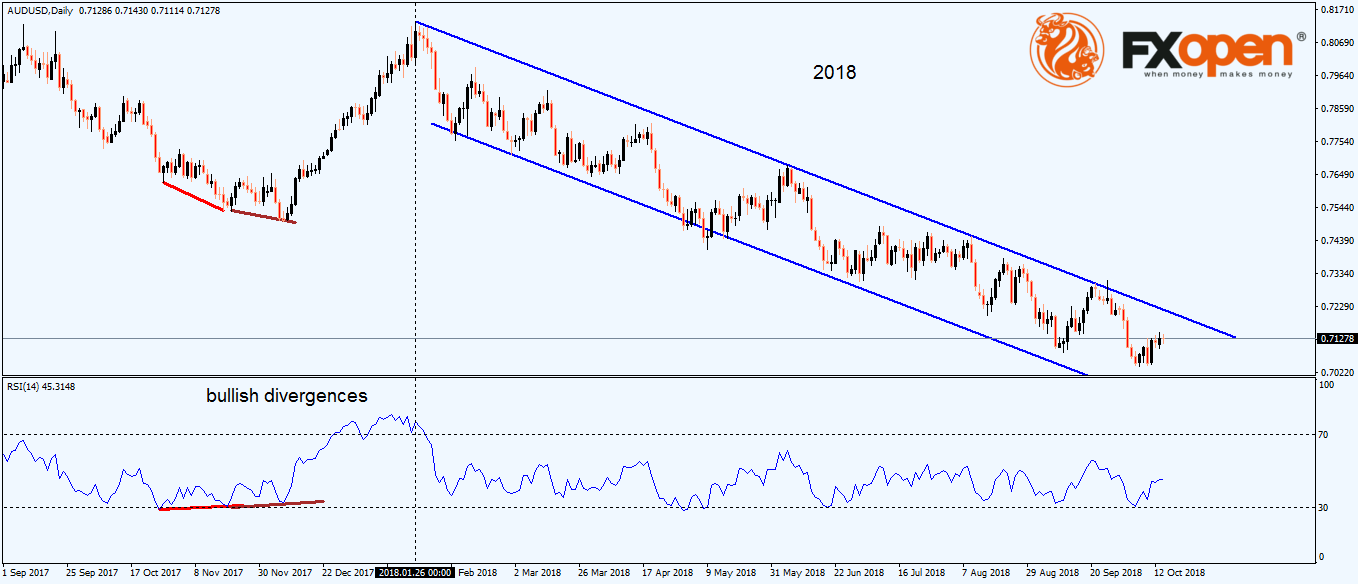FXOpen

J. Welles Wilder, a market technician, invented the Relative Strength Index or the RSI back when the FX market wasn’t available to retail traders. In those times (late 1970’s), the current free-floating currency system was in its incipient phases.
The Nixon administration scrapped the Bretton Woods agreement and allowed the USD to free-float against other currencies. This is how the foreign exchange market was born, and traders from the stock market quickly became interested in its mechanism.
As the art of speculation is as old as human beings living on this earth, stock market traders brought all their trading strategies and tools to speculate on the newly born exchange. The RSI was the number one choice.
What Is the RSI and Why Retail Traders Love It?
The RSI is an oscillator. Most indicators fit into two big categories: trend indicators and oscillators.
The ones that belong to the first category appear on the actual chart, closely following the price action. Oscillators, on the other hand, appear in a separate window, below the candlesticks that make up a chart.
All oscillators use a mathematical formula that considers multiple periods before plotting a value corresponding to the current candlestick. For this reason, traders stick to the oscillator’s interpretation, rather than the actual price action, to filter fake moves.
The standard RSI period offered by most trading platforms, like the MT4, is 14. It means that the RSI considers the last fourteen candlesticks before plotting the value corresponding to the current price action.
Depending on the timeframe the implications of interpreting the RSI differ. For instance, the RSI on the monthly chart tells a different story than the RSI on the five-minute timeframe.
Any trading platform allows traders to edit the setting of an indicator. It means that traders can alter the periods considered by an oscillator like the RSI.
If the RSI considers more periods, the RSI line becomes flatter, losing its original interpretation. On the other hand, with fewer periods, the RSI is too volatile, again losing its standard interpretation. Therefore, the best way to use it is to make the most of the default settings, just like J. Welles Wilder intended.
Trading With the RSI
There are two ways to trade with the RSI: interpret overbought and oversold areas and look for bullish or bearish divergences.
The indicator travels only in positive territory. In other words, it is impossible to see a negative value for the RSI. Also, the maximum value for it is 100.
Levels beyond 70 and below 30 are considered unusual. The bigger the timeframe, the more significant the implications for the currency pair.
Therefore, above 70 the market becomes overbought. Traders at least close the long positions, if not start establishing short ones.
Here’s the 2018 AUDUSD price action. If there is one currency pair that trended this year, it was the AUDUSD pair.
If formed a beautiful falling channel, and the price dropped over a thousand pips so far. Nothing staggering on this chart, but if we add the RSI(14), we see that the bearish trend started when the AUDUSD traded in overbought territory. Or, when the RSI reached levels considered extreme to be on the long side.
Not all traders use overbought and oversold levels. In fact, they don’t work all the time, as they depend on the trending or ranging character of the market.
To filter the trades, divergences come to help. A divergence appears when the RSI and the price make two different moves. They show different price action.
For instance, the price may form two consecutive lower lows, but the RSI diverges. It doesn’t show the second one.
This is called a bullish divergence, or a double bullish divergence. The AUDUSD price kept falling while the RSI didn’t confirm the lows. Inevitably, the market rose as a consequence.
Conclusion
These are the primary ways to use the RSI in technical analysis. They are the foundation for other strategies that help traders coming closer to profitability. However, without understanding overbought and oversold levels, as well as divergences, no trader is ready to move forward with understanding the RSI complexity.
This article represents the opinion of the Companies operating under the FXOpen brand only. It is not to be construed as an offer, solicitation, or recommendation with respect to products and services provided by the Companies operating under the FXOpen brand, nor is it to be considered financial advice.








